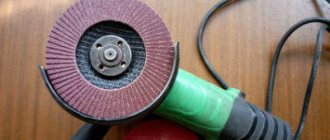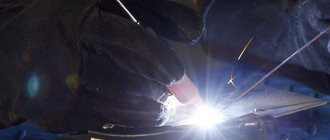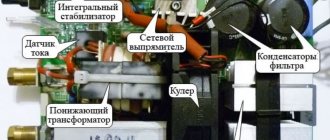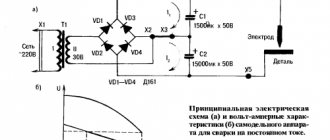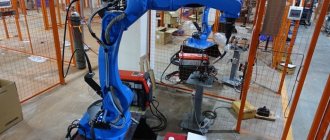Creating accurate and high-quality metal structures is difficult to imagine without the use of devices such as clamps . These are special clamps that allow you to securely fix and precisely join components of metal structures during assembly or repair work.
Workpieces are clamped most often with jaws, but other gripping elements can also be used, it all depends on the type of clamp.
Today, there are over a dozen types of clamps:
- F-shaped
- G-shaped
- Pipe
- Tape
- Corner
- Spacers
- Cross
- Two- and three-axis
- etc.
In addition to the type of construction, clamps for welding differ from each other and according to the principle of compression:
- Screw
- Trigger
- Lever
- Spring
- etc.
Below we will describe the four most common clamps, which no assembler/repairer of metal structures can do without. So, what types of clamps are in demand today.
G-clamps
This is the simplest version of clamps. The design of such devices is represented by an ordinary bracket with a screw clamp . An example in the photo below.
G-clamps are used to secure workpieces to the edge of a benchtop or welding table. Such clamps are mainly suitable for working with oversized parts .
Using G-shaped clamps, you can immobilize and position in the correct direction: angle, channel, sheet metal, pipe with a rectangular profile, hexagon and other types of rolled products. At the same time, G-shaped clamps make it possible to reliably press parts together: pipe to pipe, pipe to metal sheet, etc.
The main disadvantage of G-shaped clamps is the ability to clamp workpieces only at the edge of the tabletop , since the clamp has a noticeably limited profile depth. What other types of clamps are there?
Fixing devices
In order to ensure not only the passage of electric current through the metal, but also the fixation of the parts being welded to each other, fixing equipment is used.
- Ties, clamps and clips . Ties and clamps are used to tighten the edges and ends of parts and fix their location. Fixation ensures the stability of the part when struck by an electrode and prevents changes in shape under the influence of temperature; it is carried out by squeezing the handles, and the dimensions of the pharynx are set using a screw, rearranging the pin and other methods. Clamps are indispensable for welding work during car body repairs, since a thin sheet is more easily susceptible to various deformations. Clamps are used mainly to fix the part along the entire length to be welded. The most common types of clamps are screw clamps that are tightened.
- Spacers are used in situations where it is necessary to maintain a certain distance between parts of the structure being welded. For example, if three elements are welded in the shape of the letter “P” and it is necessary to ensure an equal distance between the upper jumper and the lower part. Also used to correct minor deformation defects.
- Clamps - tightening devices with clamping screws allow you to fix metal of various shapes and sizes. Clamps are available for sale in various shapes and sizes, with fixed and variable throat sizes. The most popular are corner clamps, which provide fixation of parts that are butt welded at right angles.
- Centralizers - these mechanisms ensure alignment of the axes or edges of the parts being welded. Such devices are divided into external and internal. Terminals can also be homemade, manufactured for a specific type of work. For example, you can make a terminal in the form of an angle for welding several parts that need to be provided with a certain angle of inclination. A wire attached to a metal template will allow it to be used as a minus in cases where several parts need to be made using this template.
F-clamps
If G-shaped clamps have only one adjustment (clamp height), then F-shaped clamps have several adjustments . This is directly the height of the clamp and the so-called “booster”, which guarantees the most reliable fixation. An example of an F-shaped clamp is shown in the photo below.
As with G-type clamps, F-type clamps are designed to clamp workpieces either to each other or to the edge of the countertop.
F-shaped clamps regulate the clamping height by means of a guide bar along which the lower clamping jaw runs. The principle of fixation in such clamps is simple. Resting against the workpiece, the lower jaw wedges on the guide bar. To strengthen the wedge, you just need to tighten the auxiliary screw clamp.
F-clamps for welding and carpentry applications typically feature a guide bar. In welding clamps, the guide bar is usually flat, but in joinery fixtures, the guide bar most often uses a ribbed surface.
Unlike G-devices, clamps with an F-shaped profile allow you to fasten fairly high workpieces . Of course, there are also very small F-clamps. The height of the jaw opening in F-clamps can be from 100 to 300-500 (mm). The specific clamping height will depend on the clamp model. From the video below you can learn how to choose a clamp for welding.
Crocodile
The crocodile is a standard clamp that comes with the welding machine. This item owes its name to its appearance, which resembles the mouth of a crocodile.
This device is convenient to use; it is easy to change its position with a simple press of the hand. It can be fixed to metal of any shape, be it an I-beam, pipe or sheet.
The disadvantages of “crocodiles” include the difficulty of mounting on large diameter pipes and corner surfaces. In this case, an additional “horn” from a small pipe is welded to the structure, which will serve as a “mass,” or a longer wire will be required for the “crocodile” to bring it to a place where it will be convenient to place it.
When buying a crocodile, you should pay attention to the build quality, especially the installation of the spring. The spring should not compress too easily or too tightly. A poorly assembled mechanism with a weak spring may break during work, which can lead to defects at critical welded joints, such as the presence of microholes or deformation from unexpected cooling.
Angle clamps
This is a series of highly specialized clamps. With their help, you can accurately join shaped bars at right angles . Such clamps are indispensable in the manufacture of frames and frames. The corner clamp allows you to weld the ends of pipes, angles, channels, etc.
There are mobile and stationary clamps. Mobile type clamps can be used locally, that is, directly on the metal structure itself. Stationary clamps are rigidly attached to the table top of a metal workbench or assembly/welding table. Stationary clamps allow you to join rolled products in one place, which has a positive effect on the accuracy of manufactured structures. Stationary type devices have proven themselves in serial and mass production of metal structures .
Classic corner-type clamps secure workpieces using clamping jaws. In more modern models, rental fixation is implemented using magnetic forces. It is enough to simply place the workpieces on the guides, the rolled product itself will “stick” to the clamp. Magnetic clamps are characterized by their simple and reliable design.
The weak point of magnetic corner clamps is the ability to work only with metal workpieces that exhibit magnetic properties. Clamps with clamping jaws can join aluminum, alloy steel, copper and all kinds of alloys that do not react to magnets.
Welding accessories
The welding itself sometimes requires much less time and effort than preparation for it. The main part of the latter is the assembly of the welded structure with the fixation of all elements in the desired position. This work requires special attention, since the quality of the finished product depends on it.
Welding accessories: clamps
It’s annoying when, after carefully calibrating and installing the elements in the desired position, the structure assembled with such diligence falls apart at the touch of an electrode, and you need to assemble everything all over again. It’s even worse when the element is welded, but not in the required position - it has moved imperceptibly or deformed after the metal has cooled. Using universal and specialized welding fixtures helps save time and get a high-quality product at the end.
There are many different devices and mechanisms designed for welding. In industry, where they deal with serial and mass production, specialized mechanized and automated equipment is used - transport devices, mechanisms for laying and tilting products, technological assembly devices, etc. At home, as a rule, manual welding devices of universal action are used, allowing carry out quick assembly of the structure, securely fasten all elements in the desired position and achieve minimal deformation of the part.
Main types of assembly and welding fixtures
All assembly and welding devices can be divided into two main types - installation and fastening.
Mechanisms that combine both of these functions are especially convenient. Installation accessories
. Installation fixtures are designed to install the part in the desired position - exactly in the position in which it will be in the finished product. Based on their functions and design, they are divided into stops, squares, prisms, and templates.
Stops are used to fix parts on base surfaces and can be permanent, removable or folding (retractable, rotary). Permanent stops, which are most often ordinary plates or bars, are welded or screwed to the base. Removable or folding stops are installed when their constant presence in the part is structurally unacceptable.
Squares are used to install parts at a certain (90°, 60°, 30°, 45°) angle to each other. Squares are easy to use, the edges of which are made rotating and allow you to set any necessary angle between them.
Squares
Prisms are used to fix cylindrical products in a certain position. The simplest design welded from corners can be successfully used as a prism. Templates are designed for installing elements of a welded structure in a given position in relation to other previously installed parts.
Pipe welding device
Fastening devices
. With the help of fastening welding fixtures, the parts, after being installed in the desired position, are firmly fixed in order to prevent their accidental shift or deformation after cooling. Fastening devices include clamps, clips, clamps, ties, and spacers.
Welding accessories: clamps and clamps
Clamp
- a universal tool used for almost any work with metal. For a welder, it is the first most important device, and if it is possible to do without it, then only at the cost of extreme inconvenience and to the detriment of productivity. Clamps for welding can have a variety of shapes and sizes, with a constant throat size and adjustable. Especially convenient are quick-release clamps, in which the clamping occurs using a cam mechanism. In general, it is advisable for a welder to have a set of a variety of clamps, since to assemble one structure, several of them may be needed - of different sizes and configurations.
Bessey clamps
Bessey clamp with adjustable jaw and tilt stop
Bessey quick release clamps with adjustable jaw
Welding Clamps
differ from clamps in ease of use and greater suitability for welding work. The parts are fixed by squeezing their handles. The required dimensions of the pharynx are set using a screw in the clamp handle, moving the pin to another hole, or in another way.
Clamps
Clamps
According to the operating principle, they are divided into screw, wedge, eccentric, spring, and lever. Of all the clamping devices, screw clamps are the most common. The simplest type of homemade screw clamp is a regular bolt with a nut, threaded into the holes of two plates, with the help of which the parts placed between them are clamped.
In wedge clamps, parts are clamped using wedges, lugs, shims and a hammer.
Welding accessories: clamps
Clamps are a piece of sheet metal with a wedge-shaped groove.
The spring clamp presses the part due to the presence of elastic deformation. It is made from a strip of sheet material or wire made of spring steel.
In eccentric clamps, the part is clamped using a cam (1) mounted on a lever (2) when the eccentric (3) is turned by a handle (4). These devices are convenient in that the clamping is performed in one movement, but their disadvantages include the relatively small working stroke of the cam, which is why they are used much less frequently than screw clamps.
Ties
are used to bring the edges of welded dimensional parts together to a specified distance. Their length and method of attachment to the structure can be very different, depending on the task facing them.
Welding device: tie
Welding device: tie
Spacers
They allow you to align the edges of assembled parts, give parts the desired shape, and correct local defects.
Welding fixture: spacer
Many of the above welding fixtures are easy to make yourself, giving them the sizes and shapes that correspond to the most frequently performed work.
Installation and securing devices
The most convenient to use are welding devices that perform the complex function of installing a part in the desired position and securing it. In this case, you do not need to worry about aligning the parts correctly; you just need to insert them into the fixture and tighten the screws or eccentrics. The figure below shows three similar devices for assembling elements at an angle of 90°, allowing you to quickly and easily align and fasten parts to be welded in one or two planes. To ensure that the structure is removed from the fixture after welding, one of the clamps on the fixture for volumetric assembly (top right) is rotatable.
Installation and fastening devices for welding
Bessey Angle Clamps
Using the Strong Hand Tools Corner Clamp
A simple device for fixing parts at right angles is easy to make with your own hands. To do this, you will need two pieces of angle, a piece of strip, two clamps, a square and a welding machine.
Homemade welding fixture
The corners and strip cut to the required length (the dimensions can be seen in the photo, the scale is inch) are fixed with clamps using a square.
Homemade welding fixture
After fixing and checking the correct position of the corners, the corners are attached to the strip at four points. If you immediately make a long seam or the dots are too large, the structure will fail.
Homemade welding fixture
Homemade welding fixture
Next, the clamps and square are removed so as not to be damaged during subsequent welding, and the corners are welded with a more reliable seam, alternating short seams on different sides so that the structure does not move. Then the clamps are pressed and welded at several points. Although the clamps do not need to be welded.
Homemade welding fixture
Pipe welding equipment
Welding pipe ends is a frequently performed operation, both in production and at home.
Many devices have been developed for welding pipes to facilitate this work and ensure its proper quality. Centralizers (as these devices are called) ensure the alignment of the welded pipes and the alignment of their end edges. By design, they can be external or internal; the former are used much more often. The photo below shows a link centralizer used for welding large diameter pipes. It consists of several links, hingedly connected to each other and forming a closed loop. The ends of the pipes to be welded, placed inside the device, rest on stops that center them relative to each other.
Pipe Welding Tool: Link Centralizer
In a home workshop, clamp centralizers designed for welding pipes of smaller diameter will be more useful. For example, the centralizer-clamp model CM151 (in the figure below on the left) is designed for pipes with a diameter of 57-159 mm, and the centralizer-clamp model CS3 (on the right) is for pipes with a diameter from 10 to 70 mm.
Devices for welding pipes: centralizer-clamp SM151 and centralizer-clamp CS3
Bessey pipe clamp
In fact, ensuring alignment of small diameter pipes is not such a difficult task. It is quite possible to do without purchasing a specialized tool by using a simple homemade device for welding pipes, consisting of angles and clamps welded to them.
Homemade pipe welding device
Or like this:
Homemade pipe welding device
It is not necessary to weld the corners to the clamp (for example, if there is only one clamp), you can simply grind off the corner at the corners where the clamp stops.
Devices with magnets
Very convenient assembly and welding devices are magnetic welding devices that connect and hold parts in a certain position by the force of attraction of magnets built into them.
Magnetic squares
. Devices of this type are very widespread. A large number of all kinds of magnetic angles are produced, differing in shape, the presence or absence of additional fasteners and the possibility or impossibility of changing the angle. With their help, it is very convenient to connect sheet parts, frame structures, racks, etc. at the desired angle.
Magnetic square Strong Hand Tools
Magnetic square Strong Hand Tools
Magnetic square Strong Hand Tools
Magnetic square Strong Hand Tools
Universal magnetic devices
. In addition to squares, there are other magnetic devices that have much greater functionality and versatility. How convenient and easy it is to work with them can be understood by taking a closer look at a device called MagTab (Strong Hand Tools).
MagTab Magnetic Welding Tool (Strong Hand Tools)
The device consists of two support planes (1) with built-in magnets. The angle between them can vary depending on the shape of the base they are to be attached to. It can be a cylindrical surface, a plane or an angle. In addition to the support ones, there are two more planes (2), to which parts that need to be welded to the base are attached. They are located at an angle of 90° to each other and have a degree of freedom in relation to the supporting surface, due to which the welded parts can be shifted relative to the base. It is known how much time and effort during welding sometimes requires installing and securing an inconvenient and unstable part in the right place. The use of a device like MagTab (Strong Hand Tools) allows you to quickly and easily weld any part to a base of different shapes. It is enough to install the device on the base and attach the welded element in the right place to one of its two fastening surfaces. The strength of the magnet ensures sufficient strength of fastening of the part and its immobility during welding.
MagTab Magnetic Welding Tool (Strong Hand Tools)
MagTab Magnetic Welding Tool (Strong Hand Tools)
MagTab Magnetic Welding Tool (Strong Hand Tools)
There are even simpler options:
Magnetic V-Pads for Welding (Strong Hand Tools)
Magnetic assembly and welding devices are very convenient. They allow you to reduce the time for assembling structures several times and ensure their proper quality. Simple, easy to use and relatively inexpensive, they, along with clamps and clamps, deserve to be in the home workshop. Having obtained permanent magnets or made an electromagnet, you can make such devices with your own hands. It’s just important to remember that when exposed to high temperatures (some magnets are exposed to not very high temperatures), permanent magnets are demagnetized.
Gas lenses
In argon arc welding, the speed of gas flow from the torch and the shape of the products being welded have a great influence on the quality of protection.
Too high a gas flow rate has just as bad an effect on the quality of protection as one that is too low due to air suction into the nozzle and turbulence of the gas flow. To remove turbulence and make the argon flow laminar (linear), gas lenses are used - collet clamp housings of a special design (with a fine mesh inside), ensuring laminar gas flow. The gas lens is installed instead of a standard collet clamp. The burner nozzle also changes along with it, since the lens has increased dimensions.
Gas lens
Gas flow using a gas lens (left) and without a lens (right)
The use of gas lenses is considered appropriate in cases where it is necessary to provide better gas protection due to the special properties of the material (for example, in the case of titanium) or the configuration of the products being welded. Their use also allows you to extend the electrode more than usual, which is sometimes necessary.
However, gas lenses also have disadvantages. In particular, their use requires greater gas consumption. The increased size of the nozzle somewhat impairs the view of the welding area.
Devices for secondary protection during argon arc welding
When welding titanium, it is necessary to protect not only the immediate zone of molten metal, but also the areas adjacent to it.
This is due to the fact that titanium at temperatures above 400°C begins to actively react with gases contained in the air, as a result of which its fragility increases and strength decreases. To prevent this, the so-called secondary protection, the purpose of which is to exclude contact with air of those areas of the metal that may have a temperature above 400°C. The main device for secondary protection is a metal casing (“boot”) attached to the torch nozzle and providing gas supply to the weld area. In order for the “boot” to fulfill its purpose efficiently, its shape must correspond to the configuration of the product being welded and the parameters of the torch. It is often made independently or ordered for a specific burner and job. To ensure a uniform supply of gas to the protected surface, the device can be filled with some kind of porous filler, in particular, aluminum shavings.
Welding boot
In the form of modifications of welding devices that provide secondary protection, flexible aprons are also used, which perform the same role as the “boot”, but unlike the latter, they have flexibility that allows them to bend around cylindrical structures. Such devices are sometimes made from copper foil of sufficient thickness.
Device for secondary welding protection
Device for secondary welding protection
Secondary Welding Protection Tool (Huntingdon Fusion Techniques)
Device for internal protection of welded pipes (Prestige Industrial Pipework)
Device for internal protection of welded pipes (Prestige Industrial Pipework)
When using the content of this site, you need to put active links to this site, visible to users and search robots.
Literature
Clamps
A separate category of clamps, which is intended for installation on welding or assembly tables. Clamps of this type are often called “quick-action clamps . Unlike G- and F-shaped clamps, clamping clamps allow you to fix workpieces not only at the edge of the tabletop, but anywhere in the work area.
Clamps of the clamping type are mounted either using special technological connectors (round or T-shaped) or adjustable plates.
There are many types of clamping clamps. Below is a video, the author of which demonstrates a wide range of quick-action clamps. The video also contains recommendations on how to choose a clamp for welding.
Clamps can be divided into several broad categories:
- With screw clamp
- Lever/hinge
As is clear, in clamps with a screw clamp the jaw moves on a threaded rod. The lever is pressed by an eccentric mechanism. In advanced clamps, the eccentric clamping force can be adjusted.
Additional Information
When choosing clamps for welding work, special attention should be paid to the materials used in the design of the clamp . For fixing metal workpieces, preference should be given to clamps with metal jaws . The fact is that when welding workpieces, the metal of the assembled part can heat up to the point of redness. If the sponges are plastic or rubber, they will immediately “float”.
Plastic and rubber sponges are only good for carpentry operations.
You should not limit yourself to ordering a clamp of one single size. In the bins of an experienced metalwork assembler, each type of clamp is represented by three or even four standard sizes .
If welding work is carried out as part of serial or mass production, then preference should be given to factory-made clamps . In this case, homemade clamps will not provide high accuracy of joining of workpieces. For single home use, experienced welders often use homemade clamps. Among such clamps there are also unique specimens that have no analogues on the industrial products market.

